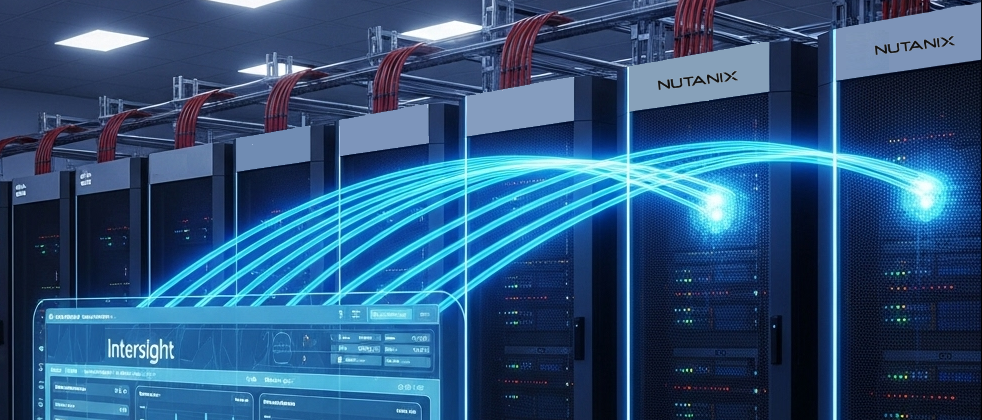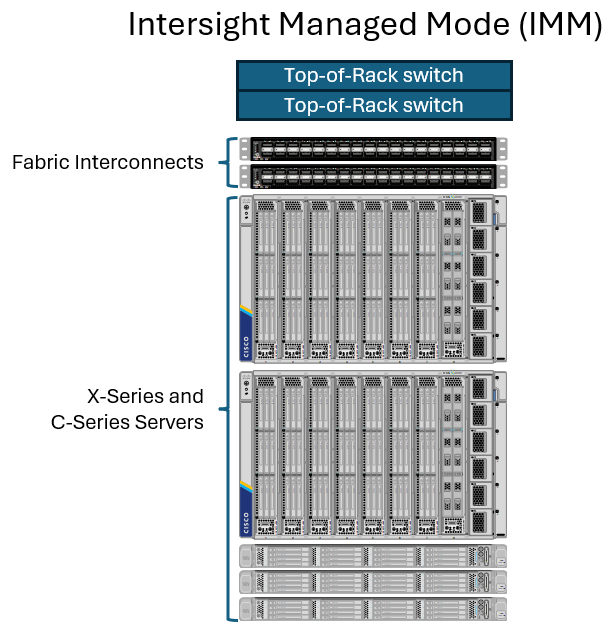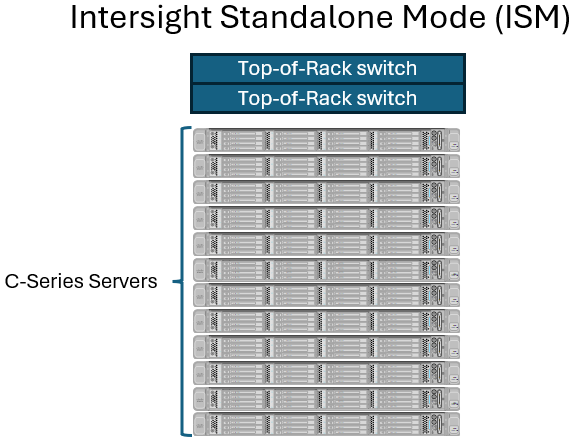Cisco HCI with Nutanix - Intersight Deployments
Cisco HCI with Nutanix directly integrates with Cisco's enterprise server management platform, Cisco Intersight.

If you're not familiar with Cisco Intersight, you can read a whole bunch more here. Without doing it any justice, you can think of Intersight as Cisco's enterprise server management platform.
Intersight offers several deployment models:
- Cloud Hosted (SaaS)
- This is the easiest and fastest way to start consuming the services and features of Intersight and is typically seen as the preferred route.
- As a virtual appliance which comes in two flavors:
- Connected Virtual Appliance (CVA) - An appliance that still is able to connect out to the cloud and get its updates, but keeps the data on-premises
- Private Virtual Appliance (PVA) - An appliance that provides the functionality on-premises but is typically used for fully air-gapped environments.
A Strategic Integration
If you've been reading the previous articles, you probably (hopefully) started to get a sense that Cisco and Nutanix are truly trying to bring a differentiated joint solution to market. This is another one of those integrations that furthers the partnership.
Intersight is a core strategy for Cisco and it needed to take a major role in the overall solution. From deployment to infrastructure visibility, Cisco and Nutanix have delivered (and continue to add features).
Deployments
Cisco offers several different ways to deploy its Nutanix solution, each of which offers their own differentiators:
- UCS Managed Mode (UMM): Managed through UCS Manager and requires fabric interconnects (FIs).
- Intersight Managed Mode (IMM): Managed through Intersight and requires fabric interconnects (FIs).
- Intersight Standalone Mode (ISM): Managed through Intersight and does not require fabric interconnects. These servers plug directly into a top of rack switch.
UCS Managed Mode (UMM) is the initial deployment model that Cisco and Nutanix initially released out to market. While UCS manager is still prevalent in the market, it is often regarded as a "legacy deployment model" and customers should have a good reason why they need to go down this route. This deployment model also used the more traditional Foundation VM from Nutanix (more on this later). It's also worth noting that all X-Series modular servers and starting with the UCS M8 generation of HCI servers (rackmount and modular), Cisco does not support deploying with UMM. This information can be found in the datasheets for M8 servers. For these reasons - this post will not focus on UMM.
Intersight Managed Mode (IMM) is the preferred deployment model that customers should consider. IMM does require fabric interconnects which provides several benefits:
- Highly redundant network for east/west traffic
- Highly performant network for the HCI storage traffic
- A lowered number of cables coming out of the server and lower total port count
- Supports both X-Series modular servers and C-Series rackmount servers
- More environment visibility with Intersight
- Plug-and-play fabric with auto-discovery
- Provides a converged fabric with multi-protocol support

Intersight Standalone Mode (ISM) is also an option for Cisco servers. This deployment model does not require fabric interconnects. The servers plug directly into a top-of-rack switch. This deployment mode does not support the UCS X-Series modular servers. This should be considered if a customer wants to mix form factors within the same cluster (yes, this is indeed supported). The servers are still managed via Intersight for profile and policy management. A common misconception with this deployment model is that a lot of people believe that Cisco switches are required. This is not the case - any top-of-rack (ToR) switch is supported.
I will caution from experience, however, that customers should:
- Make sure that the top-of-rack switch is enterprise grade and not something purchased at Best Buy (yes, I've seen this, yes, it wasn't good).
- That the Forward Error Correction (FEC) settings are configured correctly with 25Gbps connectivity. Failure to do so will prevent the server connections from coming online.

Why is this worthy of a dedicated post? Cisco (at least at the time of writing) is the only server vendor who has gone through all the steps to ensure that the Nutanix deployments and integrations are directly tied into its main (and only) server management platform - Intersight. Going down this path has allowed Cisco to also integrate with Nutanix's Prism Central software to further differentiate.
As mentioned above, the strategic direction for Cisco is centered around Intersight and a customer should always choose either Intersight Managed Mode (IMM) or Intersight Standalone Mode (ISM). I'll dig deeper into the deployments in a later post.